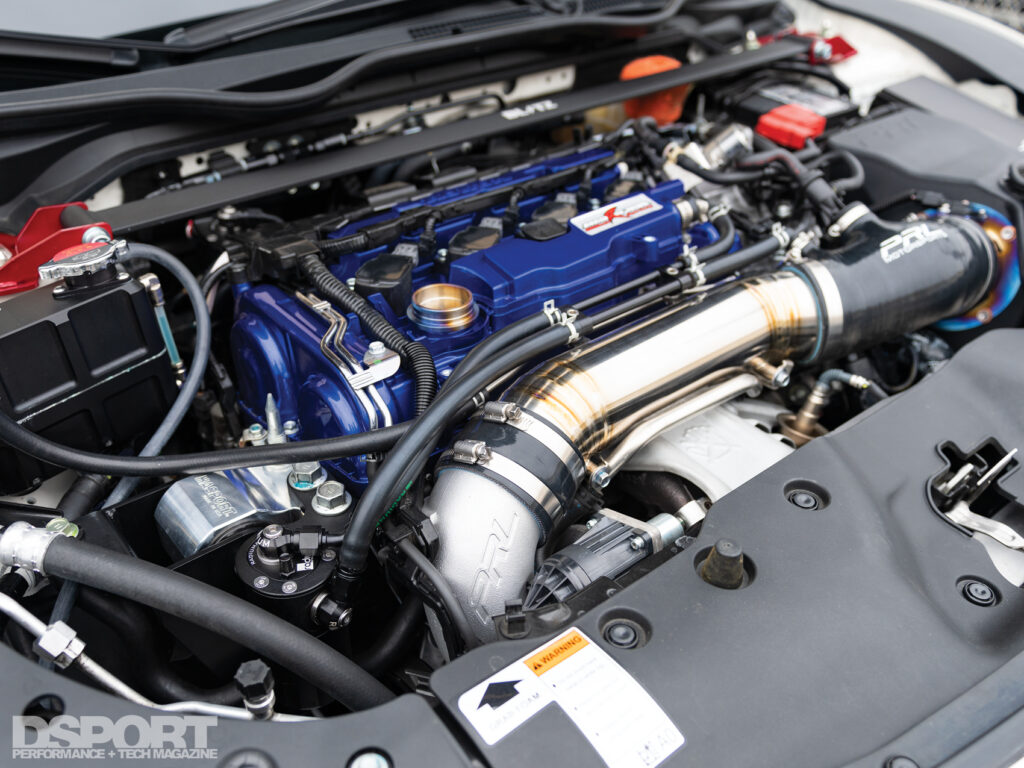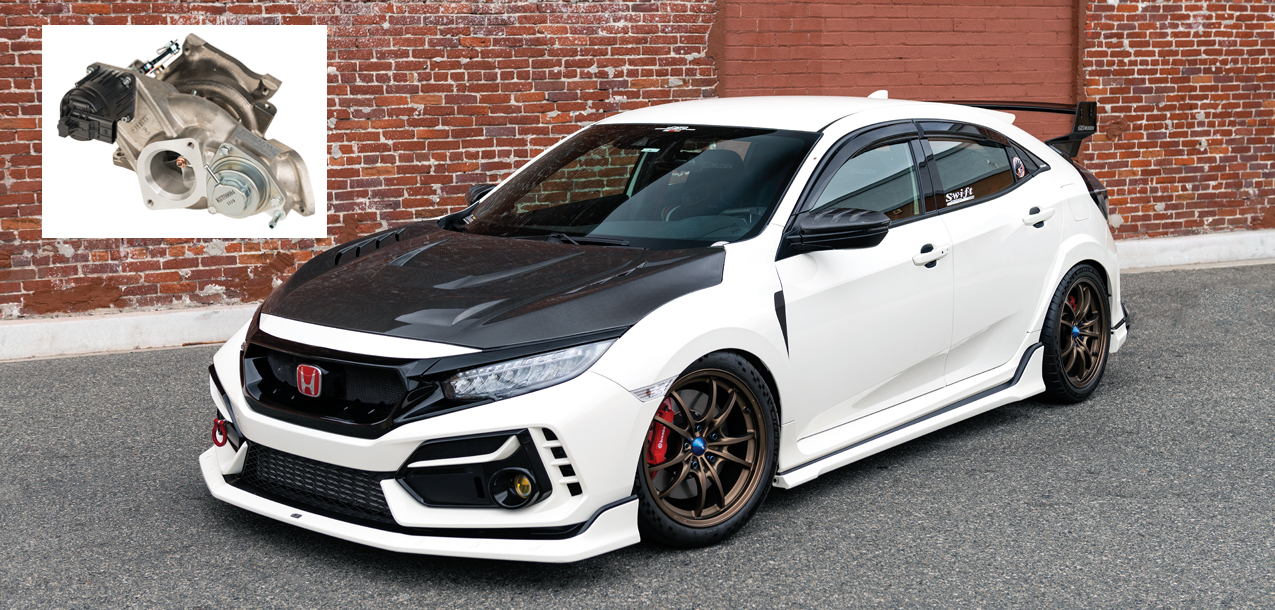DSPORT Issue #247
By Michael Ferrara // Photos by Joe Singleton
More power without the lag. That’s the desire of nearly every turbo upgrade, but historically it’s often not the case. Fortunately, there are some real standouts in the latest generation of performance turbochargers that deliver increased power without a sacrifice in response. Today, well designed billet compressor wheels feature bleeding-edge aerodynamics that allow “small” turbos to deliver big power. When TD04H-family Mitsubishi Heavy Industries (MHI) turbos were fitted to 2.0-liter 4G63-powered DSM (auto trans), one could expect 190-horsepower at the flywheel at stock boost levels or 240-260 horsepower at elevated boost levels. Today, the MHI TD04HLL bolt-on turbo for the Civic Type-R can produce enough airflow to generate over 500 horsepower to the wheels (nearly 600 at the flywheel) with the proper fuel and tuning upgrades. For an ultra-compact TD04 family of turbocharger to evolve to the point of delivering more than double the horsepower possible 30 years ago proves that turbocharger technology has made significant advancements. When we dyno tested MHI’s bolt-on turbo solution for the Civic Type-R, we were floored by the results.
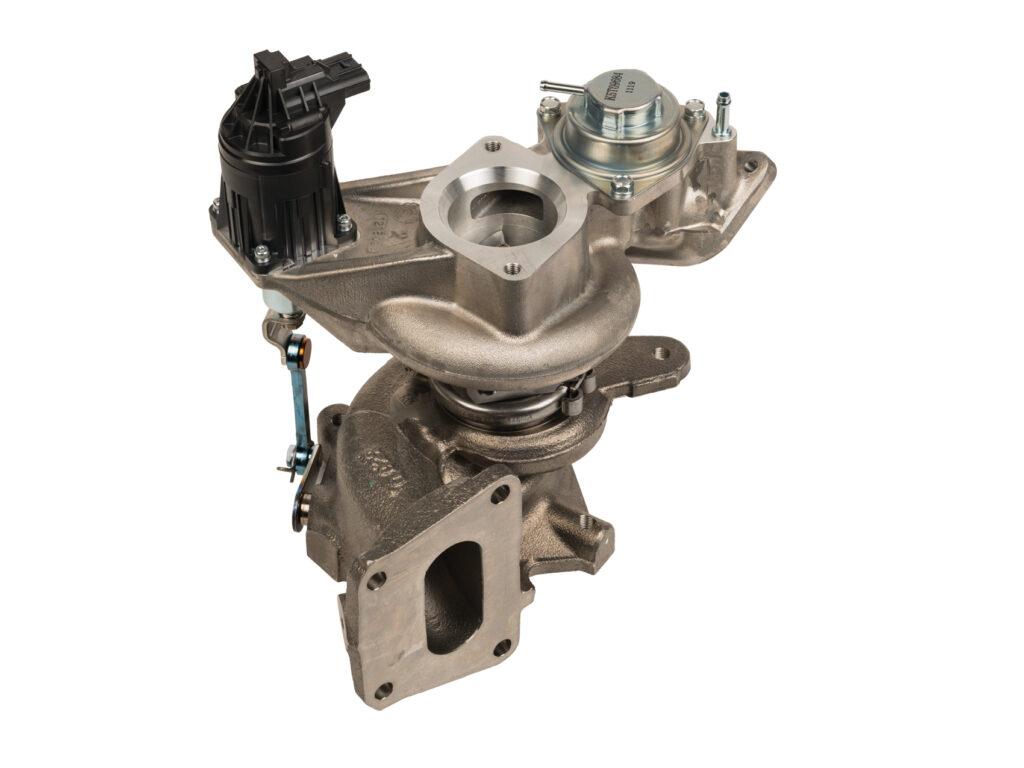
Frame or Family
Regardless of the manufacturer, turbochargers are usually classified by a frame size or “family.” For MHI turbos, TD03, TD04, TD05, TD06, TD07 and TD08 assign the basic frame sizes. For Garrett turbos, T25, T28, T3 and T4 were the popular family names eventually taken over by GT25, GT28, GT30, GT35, GT40, GT45 and more. For a given family of turbochargers, many specifications are shared (while there always being some exceptions to the rule). For the most part, any TD04 family turbo should share the same turbine inlet footprint (exception to the rule as there are both 4-bolt and 3-bolt TD04 patterns). While today’s MHI TD04HLL turbocharger shares no parts with the TD04H from 30 years ago, they are both in the same frame size of turbocharger so an apples-to-apples comparison can still be made.
The Platform
The FK8 (10th Gen) Civic Type-R has been the epitome of front-wheel-drive production car performance since pre-production examples set the FWD production car lap record at the Nürburgring in 2017. While the performance of these vehicles can put up a great lap time, the 310 horsepower just doesn’t deliver excitement. The power delivery is too smooth, too predictable, and arguably boring with a lack of personality. The vehicle is almost too refined as delivered in stock form. In pure stock form, 296 horsepower is delivered to the wheels on the DSPORT DynoJet chassis dyno. While 296 is quite respectable, the impression from the driver seat is more like an engine delivering 250 horsepower to the wheels.
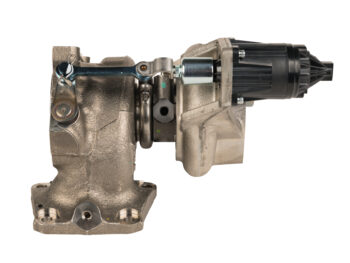
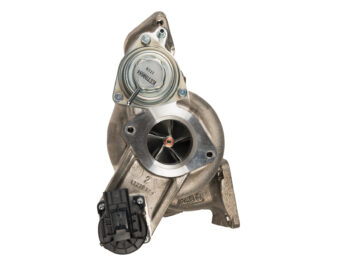
To the Limit
Fortunately, few brands command the support of the aftermarket as well as Honda. We did a round of Test & Tune upgrades in issue 222. The simple addition of a Hondata Flashpro to the “jailbroken” ECU adds nearly 25 horsepower and 45 ft-lbs of torque with an off-the-shelf map. The improved power delivery also gives the feeling that you are getting all 320 horsepower to the wheels that the chassis dyno registers. While this whets the appetite for more, the limited headroom of the OEM fuel system quickly puts the brakes on plans for more power. Fortunately, Hondata and some other aftermarket suppliers have solutions to upgrade the fuel supply and delivery system to support more horsepower. With the Hondata Fuel System Upgrade, power on 91 octane was safely increased to 332 at the wheels while using a flex-fuel upgrade kit and E45 delivered 362 horsepower to the wheels. We spent some time doing a race-only custom calibration on E45 and found 383 horsepower to the wheels which was at the safe limits of what the OEM turbocharger could deliver while maintaining a chance at a normal service life. Adding 85 horsepower to the wheels and improving the power delivery curve made a significant increase in the fun department. While this is a great start, the majority of DSPORT readers would have an appetite for even more performance. If the OEM turbo is at the limit, what could an upgrade deliver?
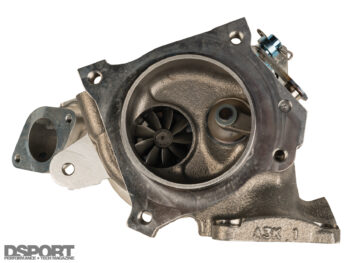
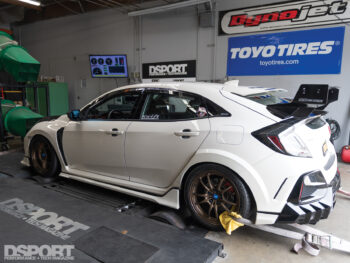
Sport Turbo
I still like using the term “Sport Turbo” that HKS coined back in the day. HKS offered “Sport Turbo” and “Full Turbo” options on many of the upgrade packages in the 90s. The Sport Turbo was an upgrade that could be bolted in place and tied into the factory plumbing while a full turbo was a turbo upgrade that needed a new turbo manifold, downpipe and a host of other items to be fitted properly. The “16G” Sport Turbo that HKS offered for the DSMs would have to be one of the most popular Sport Turbos every offered by HKS. Coincidentally, it was an MHI TD05H framed turbo that would fit in place of the OEM TD05 turbo on the vehicle yet be able to increase power to the 320-340 horsepower level.
MHI’s bolt-on upgrade for the Civic Type-R (TD04HLL1-05*21HR3-8.5) would fall under the Sport Turbo upgrade as it bolts up to all factory components. While it provides a factory fit, its function far exceeds the capabilities of the OEM turbo.
While the OEM compressor wheel is a 58mm family wheel with a 49.3mm inducer, the MHI upgrade using a billet CNC machined 65mm family wheel with a 51.59mm inducer. While there is only a 10-percent area increase in inducer size, there is a 15 percent increase in compressor wheel area due to the larger OD of the billet HR3 compressor wheel. There is also a decrease in trim size (the area ratio between inducer area and wheel area) from a 66-trim (OEM) to a 63-trim (upgrade). The lower trim ratio allows the wheel to be more efficient and capable at elevated pressure ratios (boost levels). In addition to the dimensional changes, the HR3 compressor wheel features exceptional aerodynamics that are a big reason this upgrade can provide about 30 percent more peak flow over the OEM turbo.
On the hot side of the turbocharger, a larger turbine wheel and turbine housing are also incorporated in the MHI turbo upgrade. While the OEM turbine wheel features a 46.5mm OD and 41.25mm exducer, the MHI upgrade wheel has a 52mm OD and 47.7mm exducer. The increase in exducer area is about 33 percent, which is right in line with the increase in flow potential. As a result, this match increases the exhaust flow so that the engine doesn’t encounter excessive backpressure (which often results when only compressor wheels are upgraded, but the turbo wheel remains the same). A larger 8.5 square centimeter turbine housing provides the proper nozzle to accelerate the compressor wheel at the optimum rate while avoiding compressor surge or top-end flow chokes.
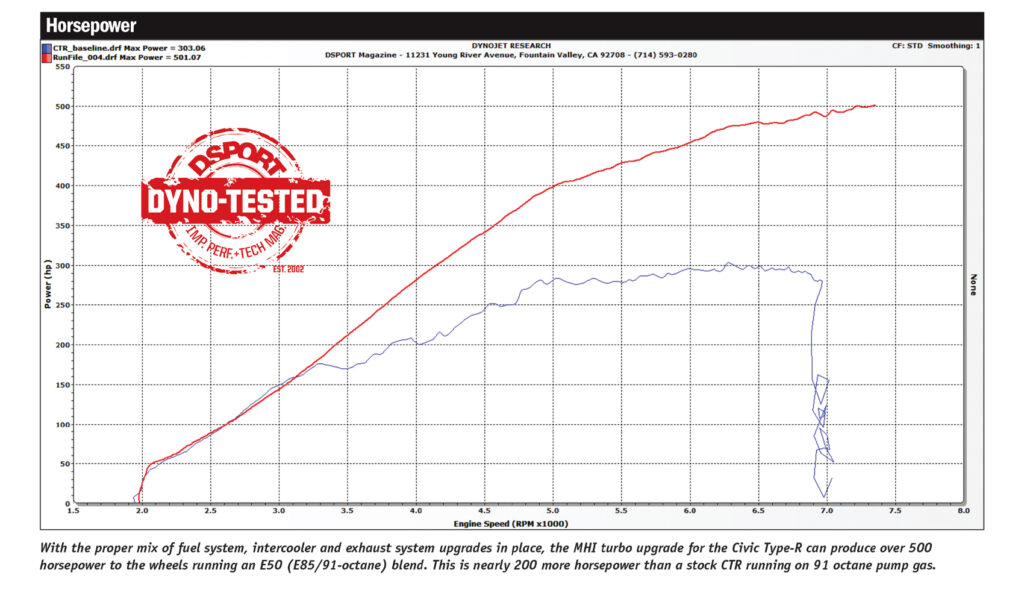
Our Tester
To evaluate the MHI turbo upgrade, we were lucky enough to get our hands on Edward Chan’s 2020 Civic Type-R. The Civic Type-R has the fuel system, intercooler, exhaust and cooling system upgrades in place that allow the stock K20 engine and upgraded MHI turbo to safely generate over 500 horsepower to the wheels (more than 200 more horsepower to the wheels than stock). It’s important to note that realizing the maximum performance available from the MHI turbo upgrade will require fuel system upgrades. Make sure that you inquire with the supplier of the fuel system upgrade as to the flow capabilities of the fuel system upgrade for the type of fuel that will be used. One system may be able to support 500whp on race gasoline but only 400whp on E50. Make sure you get the right fuel system upgrades and you have a tuning solution in place (MHI recommends Hondata Flashpro).
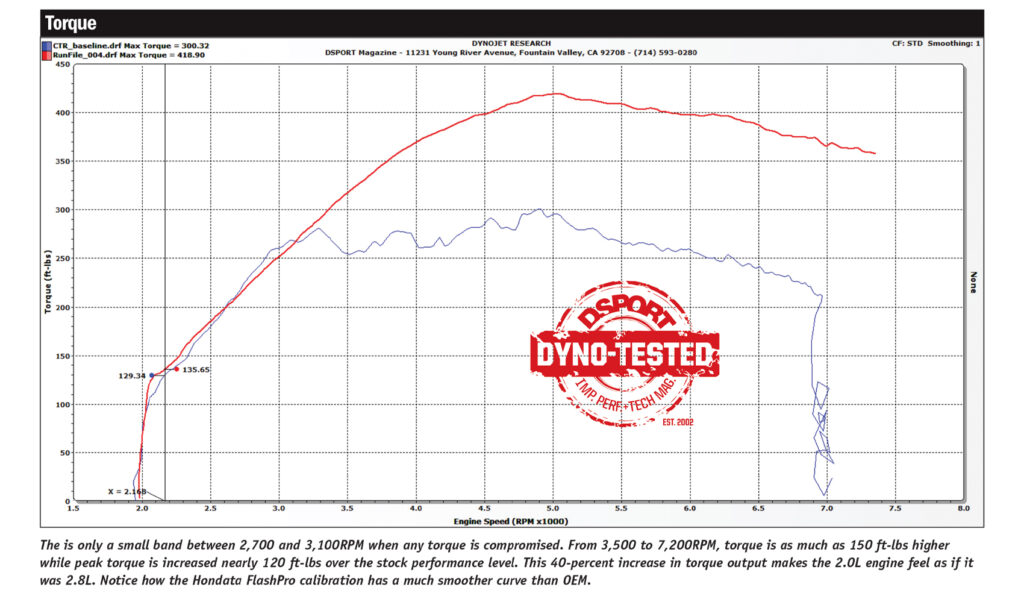
The Bottom Line
While the FK8 CTR and the R35 GTR are both amazing vehicles capable of incredible performance. Both can be accused of being a bit too refined and mild mannered. The raw sound of a B-series VTEC kicking in or the harmony of an RB26 singing to 8,000RPM may not deliver the performance of their modern replacements, they had definite character and personality. Fortunately, the proper selection of aftermarket performance upgrades for either an FK8 CTR or R35 GTR can unleash the beast in either platform while adding significant gains in the fun to drive category. If the goal is to maximize performance without going inside the Civic Type R’s engine, the MHI turbo upgrade may be a well-suited match.
